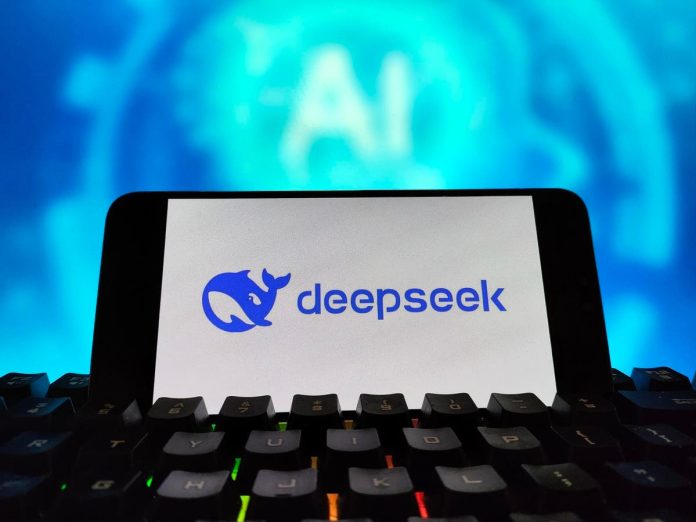SUQIAN, CHINA – JANUARY 27: In this photo illustration, the logo of Deepseek is displayed on a … More
VCG via Getty Images
Not too long ago, the tech industry was reeling from a sudden announcement by the Chinese firm DeepSeek about new models that turned the AI world on its ear.
Months later, we’re still doing postmortem analysis on what it was about DeepSeek’s achievements that was so legendary – and thinking about what it means to innovate models in today’s global market.
Beyond the market, though, all of this is also based on real innovation that has value because of what it means for continuing research.
Let me outline three of the arguments put forward on DeepSeek’s competitive positioning in a conversation with Perplexity’s Aravind Srinivas and Johnny Ho, where these cofounders are thinking about value in enterprise AI.
Three “DeepSeek Principles”
I was listening to some of what Srinivas was saying as he sat for an interview about AI and started talking about the principles behind DeepSeek’s advantage.
One is that this represented the first open source reasoning model of its kind, and the words “open source” here are important.
When you hear someone like Yann LeCun or Tim Berners-Lee talking about non-commercial research or community involvement, you can understand the value of open source. In fact, Srinivas himself, earlier on in that interview, talked about how democratized AI relies on open source models, and how that’s going to be the protection that we need against monolithic authoritarianism as AI takes hold.
So that’s one way that DeepSeek was moving the needle – in bringing this sort of open source technology to the world.
Another point has to do with unsupervised reinforcement learning. To the extent that systems can learn and work on their own without data, labeling or other forms of supervision, they are that much more powerful. In looking at DeepSeek’s achievements, more than a few of those in the American tech community are citing the model’s ability to operate without various forms of human babysitting.
A third point that Srinivas points out is the tendency towards more specific AI engines built for particular tasks and verticals. In the past, he argues, there’s been a lot of focus on general AI implementation. Crafting new models that are good at specific things and linking them together is going to be part of a new paradigm.
“(New models) have adopted some amount of common sense and general knowledge about the world, but now they need to evolve to being really good, useful assistants,” he said. “And so they need to be trained on a lot of vertical, specific tasks … and then whatever training you do there will get deployed in the form of products like Perplexity, when you have the products out here that people will use in their day to day lives and derive value.”
I found that to be astute, because we even have a name for this new paradigm. It’s called agentic AI, and everyone’s talking about it. I always go back to Marvin Minsky‘s Society of the Mind, pointing to a collection of robots or entities tethered together to do great things. But agentic AI is, by its nature, this kind of ad hoc decentralized connected system, or ecosystem if you will, and that involves a lot of particularly trained individual models or entities with specific sets of skills.
Enterprise AI and Decision-Making
This is another part of the interview that I thought was important where Srinivas talks about how human executives have to think about the details of things like hardware distribution because these are multimillion dollar decisions.
“You do need to understand the details, because that helps you make decisions worth several millions of dollars, or even tens of millions of dollars,” he said, leading into an anecdotal coloring of his point. “If it turns out that the right thing for the company is to actually go buy 10,000 GPUs and then really figure out reasoning agents for all (roles) and tasks, (for example) we have the ability to run a lot of small scale experiments, too … and conclude that, ‘okay, we are ready for that,’ and then we’re going to do it, even if it’s 10% of the total money we have. Because if that can move our market cap, more than 10% is totally worth it. So I think that is the advantage you have if you understand the models.”
In other words, don’t go to general – be able to drill down into an application or use case, so that you know exactly what it means for the business.
He followed that up with some remarks on the casino nature of modern enterprise and how it relates to the open source proposition.
“Bet on the fact that open source models will actually catch up to the closed ones,” he said. “Bet on the fact that these will get even more efficient and smaller, which means serving them will cost (less) …. Some of it is obviously luck. Some of it is good foresight, but that’s how any company works. You do need to get lucky.”
So, combining fortune with strategic growth means paying attention to these trends. That was my takeaway from all of this.
That’s a little about the situation we find ourselves in vis-à-vis new models and competitive AI innovation. I’ll bring you more as we gear up for another Imagination in Action event in April and 25 keeps being a banner year for AI.




